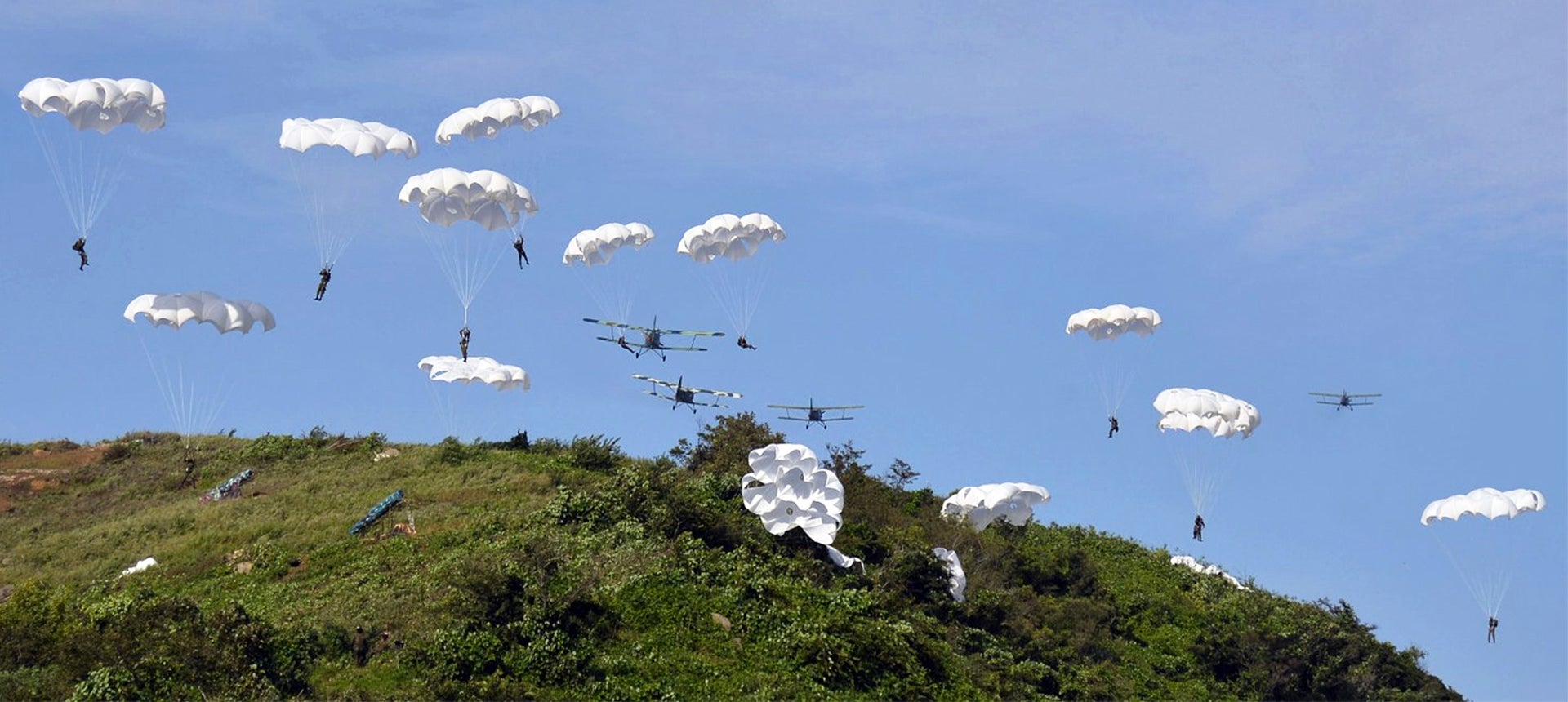With tensions between North Korea and the U.S., South Korea, and its allies at an all time high, and as the U.S. and South Korea execute combat drills, Pyongyang ordered its own military show of force. North Korea’s recent exercises included a massive artillery barrage and an amphibious assault near the maritime border between the two long time foes. Images released by state media shows North Korea’s modernized commando units going through their paces, but one picture was of especially unique interest.
The photo in question shows a gaggle of An-2 biplanes dropping North Korean commandos at low altitude. At first glance it just looks like another canned and somewhat laughable military display by the North Koreas, but it’s actually relevant practice for what North Korea has planned for the opening hours of an all-out conflict on the peninsula.

During the dark of night, as part of the opening throws of a battle royale between South Korea, the U.S. and North Korea, hundreds of these old radial engine biplanes will fly low over the ground at slow speed, penetrating deep into South Korean airspace. For the vast majority of their crews it will be a one-way mission—to deliver Kim Jong Un’s hardest shock troops deep behind enemy lines. This is done via low altitude air drop, as seen above, or by landing in short stretches of fields or roadways.
The missions of these North Korean suicide assault teams are many fold, but generally they pertain to creating total havoc deep inside South Korean territory. This includes attacking key infrastructure and military installations, and generally sowing massive terror among the already frightened South Korean populace. This deep insertion tactic alone is one of the main reasons why installations like air bases in South Korea must be prepared for instant war, even on the foot soldier level.

The fact that North Korea is now a nuclear nation and seems to have at least a workable miniaturized warhead design means these biplanes pose an even greater risk than ever before—they could also become a non-traditional nuclear delivery system. It is just the unorthodox play that Pyongyang could use to take out major military installations or critical capabilities without using a ballistic missile.
It may seem downright laughable at first glance that North Korea would throw up antiquated agricultural/utility aircraft which were designed the better part of a century ago against the might of the USAF and ROKAF, but first glances can be very deceiving. The An-2 Colt is a fabric covered flying machine that is at home muscling through the sky at very low altitudes and slow airspeed. This translates into a small radar cross-section for its size, one that is hard to spot by fighters using their radars in look-down-shoot-down mode. Flying at low altitude means traditional surface-to-air missile systems will have a very hard time of detecting and engaging these aircraft as they plot along south, hugging the terrain.

Their slow speed also plays nasty tricks on pulse doppler radars whose velocity gates (filters) often discount relatively slow moving objects, especially when they are moving at oblique angles from the radar emitter. Even Washington DC, arguably the most surveilled and highly secured airspace in the United States, along with its elaborate integrated air defense system, couldn’t spot a slow moving target with a small radar cross section even as it flew down the National Mall and landed on the Capitol’s lawn.
Finally, the old adage that quantity has a quality all its own rings true with the An-2 and North Korea’s war plans. North Korea has the ability to fill the sky with roughly 300 of these aircraft. During a time of war, there wouldn’t be enough fighter aircraft or surface to air missile batteries to shoot them down even if they could be detected and successfully engaged. Additionally, it is well assumed by Pyongyang that they will lose many of these aircraft, but that’s the hardcore nature of the tactics behind their use. Even if half the fleet is lost, still thousands of shock commandos will be on the ground in South Korea causing mayhem.

Also keep in mind, even if runways can be cratered before these aircraft can get into the air during the opening actions of a major conflict, they can takeoff from virtually anywhere. With all this in mind, maybe the best defense against these aircraft are large amounts of short-range air defense systems (SHORADS) placed all over the country. These systems can spot and engage low flying aircraft with small radar cross sections.
But the truth is that there are only a limited number of these types of systems deployed by the U.S. or the ROK. But even these systems couldn’t provide anywhere near reliable coverage over the entirety of airspace south of the DMZ, and they can only engage a handful of targets until their magazines run dry. As such, it seems like this threat will be largely dealt with once the commandos are already on the ground.

Once again, the mainstream media has been quick to disregard North Korea’s dated arsenal. This is the same reason why so many underestimated the country’s ability to field a nuclear weapon and long-range delivery system by the end of the decade.
The cold, hard truth is that the North Koreans aren’t stupid and their outlandish rhetoric and propaganda hide the existence of a much more logical and creative military apparatus than most would care to admit. Their seemingly innocuous fleet of AN-2 biplanes is just another reminder of this reality.
